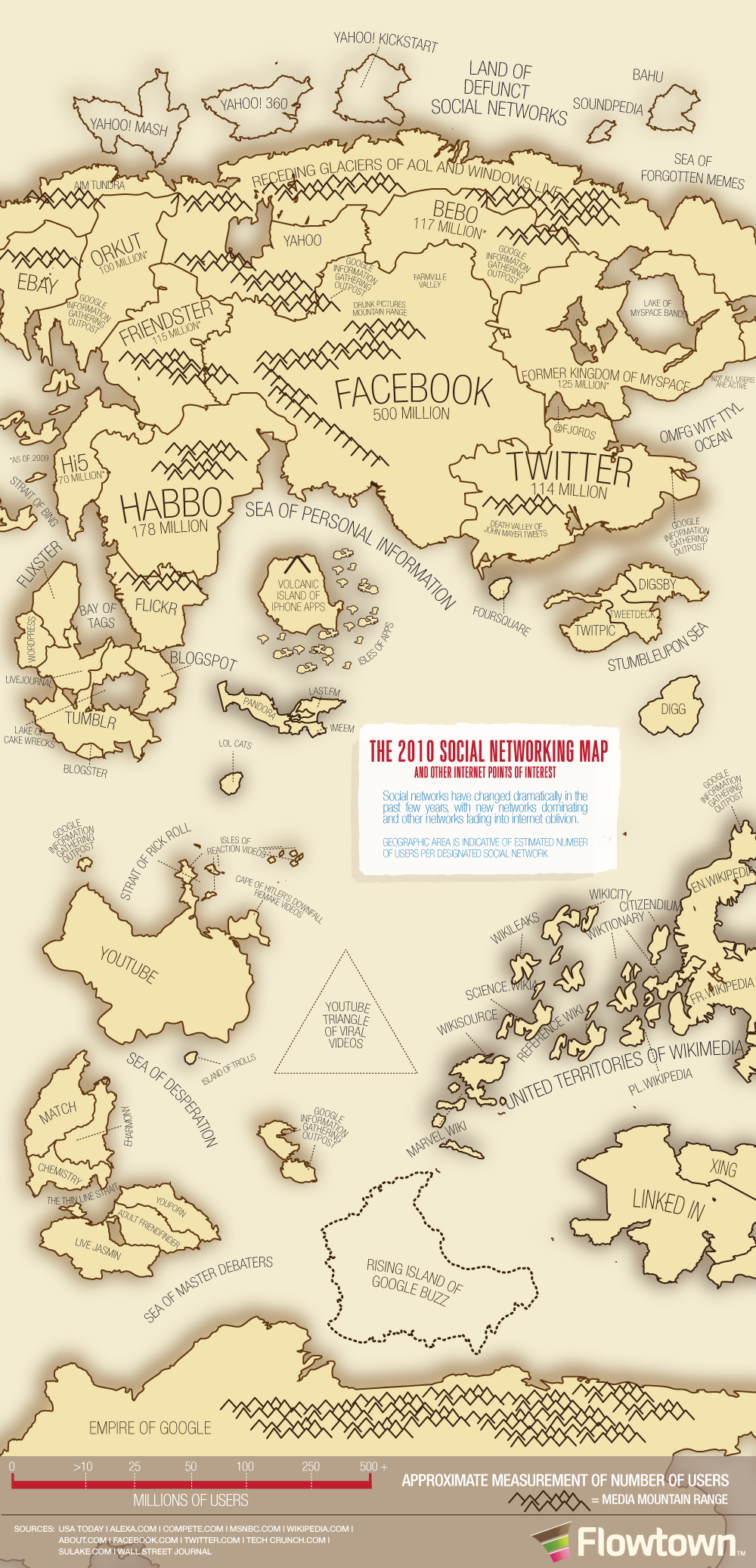3.5 – Group Communication and Social Media

LEARNING OBJECTIVES
- Identify the nature and types of social media
- Identify ways in which social media can foster and endanger group communication
- Identify safeguards that groups can adopt when communicating via social media
– Ogden Nash
– Steve Jobs
You may disagree with the whimsical words of Ogden Nash and the more philosophical statement by Steve Jobs. Perhaps you feel that today’s electronic technologies are nothing but wonderful. Whatever your opinion, though, you’ll have a hard time arguing that the Internet is a small part of people’s lives in today’s world. Consider these facts about social media:
- Facebook was expected to register its one-billionth user sometime in 2012.1
- Ten hours of video recordings are uploaded to YouTube every minute.
- Flickr provides access to more than three billion photographs
- More than three-quarters of everyone worldwide who uses the Internet takes part in social media.2
Do you remember the first time you saw the ocean? Did it awe and overwhelm you, as it did the authors of this book? Did you feel small and insignificant?
The ocean can affect us emotionally, but it can also make an intellectual impression. Knowing its scientific side, we realize that people can interact with the ocean in sundry ways. We also know it’s not possible for us as individuals or groups to go everywhere on the ocean at once or to tap all its potential. So it is with social media in the Digital Age.
The vastness, breadth, and ease of access to social media are unprecedented in human history. But they resemble the ocean in other ways besides their size. When we go out to sea, bad things can happen. We can fall prey to storms, find ourselves becalmed and bored, or discover that we don’t have the right gear to snag a particular kind of fish. We may also fall overboard and drown. Similar perils are associated with social media.

What Are Social Media?
A simple definition of social media is that they are Web-based and mobile technologies that enable interaction among people. Social media may be divided into six types: collaborative projects, such as Wikipedia; blogs and microblogs, such as Twitter; content communities, such as YouTube; social networking sites, such as Facebook; virtual game worlds; and virtual social worlds. Of these types, the first four are most likely to be valuable for serious and purposeful group communication.
How Social Media Help Groups
Until just a few generations ago, members of a group who wanted to communicate with each other at the same time needed to move themselves to a shared physical location to do so. Today, social media make it unnecessary for people to “transport their atoms” like this. These media also facilitate communication within groups in several ways. First, they allow physically separated people to communicate in real-time. Such communication is called “synchronous,” whereas interchanges that don’t follow each other are referred to as “asynchronous.” Just the “wow” factor of seeing and hearing people simultaneously when they’re dispersed over hundreds or thousands of miles can propel a group forward.
Social media also allow people in different places to collaborate on projects. As information related to tasks emerges over time, people can sustain their focus and attention on individual and shared responsibilities.
Social media permits people to keep in contact with each other when they’re not meeting formally. Electronic availability makes it possible for people to enjoy a sense of proximity and familiarity with each other.
Social media enable group members to identify and collect information pertinent to their aims. Visiting forums, blogs, podcasts, and other Internet sites can make it possible for members to enlarge their understanding of the topics they deal with.
Finally, social media can benefit members by focusing attention primarily on messages instead of “status markers” such as titles, age, and attire.
Communicating through social media frees groups from the constraints of place and time that until recently used to apply to all human interactions. It can also save considerable money and time that people used to have to spend.
How Social Media Endanger Groups
If you’re using a butter knife and drop it on your foot, your foot will hurt. If you’re using a chainsaw and drop it on your foot, you may become permanently disabled. When it comes to group communication, social media resemble chainsaws much more than they do butter knives. People may fracture friendships, lose jobs, squander opportunities, and wreck reputations through their use and misuse of social media.
Groups may encounter many kinds of dangers when they use social media. For one thing, social media can constitute a huge time sink. Nearly half of all Facebook and Twitter users sign in to their accounts during the night or first thing in the morning. Is social media the new addiction?3 Because these resources are so multifaceted and visually enticing, they may distract groups from both their task-related and group maintenance functions. Trying to select and learn to use social media can lead groups down blind alleys.
Social media also make it easy to distribute hurtful or dubious material. Misunderstandings can spread quickly and widely via electronic media, and they can be difficult to correct once people’s feelings have been hurt or inflamed. Even just a few intemperate words composed in haste, or comments intended to be taken in jest but open to multiple interpretations, can create lasting problems within a group.
Third, social media may drain the sense of “social presence” from interactions because they transmit people’s nonverbal messaging incompletely, if at all.
Last of all, groups using social media may leave dirty “digital tracks.” Nothing that members of a group post to the Internet should be considered private, and inappropriate messages or images can easily prompt criticism or even legal action.
Social media make it possible to transmit messages faster and more widely than face-to-face communication can. At the same time, reactions to messages exchanged via social media may vary dramatically because the media lack “personalness” and are processed by each individual according to that person’s circumstances and frame of mind.

Safeguards for Groups Using Social Media
To make the most of the convenience that social media offers while avoiding the pitfalls they may present, groups should be careful how they operate. As a general rule, it’s best not to say or do anything using social media that you wouldn’t do in a face-to-face setting. Here are some specific steps your group can take to best communicate via social media:
- Set guidelines for how you intend to use social media. A full-blown “policy” may not be necessary for small and informal groups, but it never hurts to put something in writing that your group members can refer to as they work or that you can offer to new members as part of their orientation to the group. These guidelines should probably identify ways in which social media is to be used to support group members. In addition, a statement should probably be included which indicates that all group members are expected to behave professionally when using social media.
- Check the privacy settings on the social media sites you use. Make sure you know how much of your communication is shared with which potential audiences. If you’re not sure whether a message or post will be accessible to the whole world, assume that it will be and act accordingly.
- Monitor your group’s online “persona” regularly. Find out what other people see when they enter the group’s name or other details in a search engine.
- Never divulge passwords from your group’s social media resources. Though the likelihood is slight, someone with access to such information could post objectionable content while posing as a group member.
- Take care to share messages and information with only the individuals you mean them for. Pause, think, and look carefully before pressing any “send” or “share” button.
- Be sure you know the copyright status of any materials you draw upon as you conduct your group’s business. If you’re not sure it’s legal or ethical to borrow or copy a particular item without asking, assume that it isn’t.
Real-time communication through social media makes it possible for group members to gauge each other’s attitudes and feelings with some accuracy. Responses to asynchronous messages transmitted via social media may not arrive in a timely fashion, however. As a result, using social media to explore topics and solve problems requires tact, patience, and flexibility.
EXERCISES – Group Communication and Social Media
- Identify two social media you or your friends have used regularly. Describe a problem you solved while using the media.
- Describe a misunderstanding you’ve experienced while using social media. How might it have been avoided in a face-to-face setting?
- Imagine that you and five classmates or work colleagues have established communication via a social medium. What rule or guideline would you adopt above all others to govern your activities?
- Interpretive Questions:
- What assumptions are present in the transactional model of communication?
- How does our native language or culture influence our communication or style of presentation?
- Application Questions:
- Observe two people talking. Describe their communication. See if you can find all eight components and provide an example for each one.
- Find an example of a model of communication where you work and provide an example for all eight components.
KEY TAKEAWAY
Social media are pervasive and can facilitate the operation of groups, but they must be used carefully to avoid causing serious harm.
Web-based and mobile technologies which enable interaction among people.
A group of people who create, store, and make available text, images, or other digital data on line - e.g., video recordings on YouTube.
A dynamic process where a small number of people engage in a conversation.
The process of understanding and sharing meaning.
Exchange of messages in real time - i.e., such that each person's message is immediately perceived by its receiver(s).
Exchange of messages by senders and recipients who do not reach each other or generate responses immediately.
Three or more individuals who affiliate, interact or cooperate in a familial, social, or work context.
To perceive, to interpret, and to relate our perception and interpretation to what we already know.
A person’s level of importance or significance within a particular environment.
The sensation of being in immediate, direct contact with other human beings rather than being distant in time or space from them.

